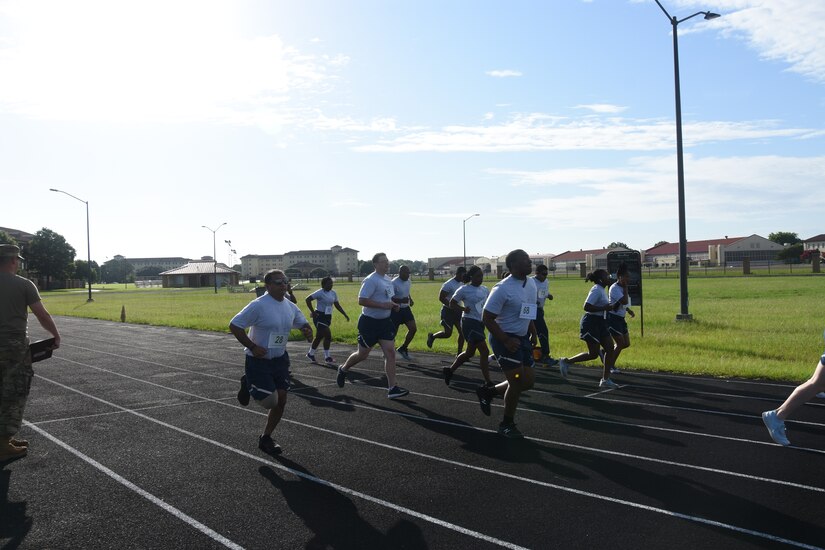
Air Force Reserve Command’s Fitness and Health Promotion functional manager and his team of 10 exercise physiologists played a prominent role in bringing about the latest major changes to the Air Force’s fitness assessment program.
The Air Force announced in July that the service will now provide Airmen five physical fitness assessment alternatives – three for the cardio portion and sit-up components and two for the push-up component of the physical fitness assessment beginning in early 2022.
As the lead exercise scientist for the Air Force’s Tier 1 Fitness Program Revision Task Force, AFRC’s Jason Ham has been at the forefront of the Air Force’s efforts to move away from a one-size-fits-all fitness assessment model.
“The most recent Air Force Fitness Program Working Group charter was signed in early 2020,” Ham said. “However, the charter has existed off and on for years. I’ve actually been on the working group for more than 25 years as a major command or Air Staff functional subject matter expert for exercise physiology.”
In addition to Ham, all 10 of AFRC’s exercise physiologists – assigned to each of the command’s host units – served on the working group and provided key research and data analysis during the quest to find new assessment alternatives.
Under the new assessment model, Airmen will select from the traditional 1.5-mile run, 1-mile walk or the High Aerobic Multi-shuttle Run (20M HAMR) to meet the cardio requirement.
They will then select from traditional push-ups or hand release push-ups for one strength component; and from sit-ups, the cross-leg reverse crunch or plank for the other strength component to complete the comprehensive fitness assessment.
Ham said he is confident the new assessment will more accurately test and measure an Airman’s fitness.
“I am very excited with the research and development done to create the five new alternate components,” he said. “I feel the task force covered many areas that were missing in the 2004-present assessment to include addressing agility, balance and coordination. The new assessments will also reduce injury risk and address total body strength.
“Initial feedback from field and beta testing show that our Airmen are very happy with the new assessments and the ability to choose what assessments they want to take the day of the test. Ultimately, the task force wanted to give the fitness assessment back to our Airmen and empower them to have a healthy relationship with their fitness.”
Air Force Chief of Staff Gen. CQ Brown, Jr. said he is excited about the new fitness assessment alternatives.
“More testing options will put flexibility in the hands of our Airmen – where it belongs,” he said in an Air Force news story. “We know not all Airmen maintain their fitness the same way and may excel in different areas. Alternate components provide choices while still providing a mechanism to determine overall fitness.”
Ham said the time was right to thoroughly review the Air Force’s fitness assessment program and make updates.
“This is the first significant change to the program since 2004, when we moved away from cycle ergometry,” he said. “Feedback from the Airmen in the field was that the fitness assessment program was in need of a comprehensive review to ensure that the Air Force is executing a 21st century assessment program with the most current science to support it.”
He went on to say that the new assessment alternatives should be good news for Reserve Citizen Airmen.
“Feedback from the Reserve during the initial test phase of the new fitness assessments was very positive,” he said. “I do believe scheduling multiple assessment options on a unit training assembly will present a challenge. However, the task force is working to update the fitness data base, myFitness, to allow for easier scheduling tools.”
myFitness will eventually allow users to schedule fitness assessments, receive automated notifications for scheduled testing or cancellations, access and submit fitness assessments, and upload medical documents for review.
myFitness is hosted on the myFSS platform and is a part of the Air Force’s initiative to improve Airmen and Guardian experience with technology by making applications user friendly and more easily accessible. Active duty, Guard and Reserve personnel will be able to access and use myFitness worldwide.
To access myFitness, go to https://myfss.us.af.mil.
For additional information on physical fitness, Airmen can visit myPers or the Air Force Personnel Center’s fitness program page. Draft fitness score charts are available on myPers to use until final score charts are provided.
Ham said the working group could not have accomplished what it did without the expertise of AFRC’s exercise physiologists.
“I would like to recognize the incredible work accomplished by our host installation exercise physiologists for all the time and dedication spent developing this program in an accelerated environment,” Ham said. “When the call came from the Air Force, we answered. It is certainly not every day that AFRC leads a Total Force revision impacting more than 755,000 Airmen globally. I am privileged to say that I stand on the shoulders of giants every day and get to work with the Air Force’s finest exercise scientists, medical professionals and policy teams.” #ReserveReady #ReserveReform
from WordPress https://ift.tt/3oe3GkB
via IFTTT

No comments:
Post a Comment